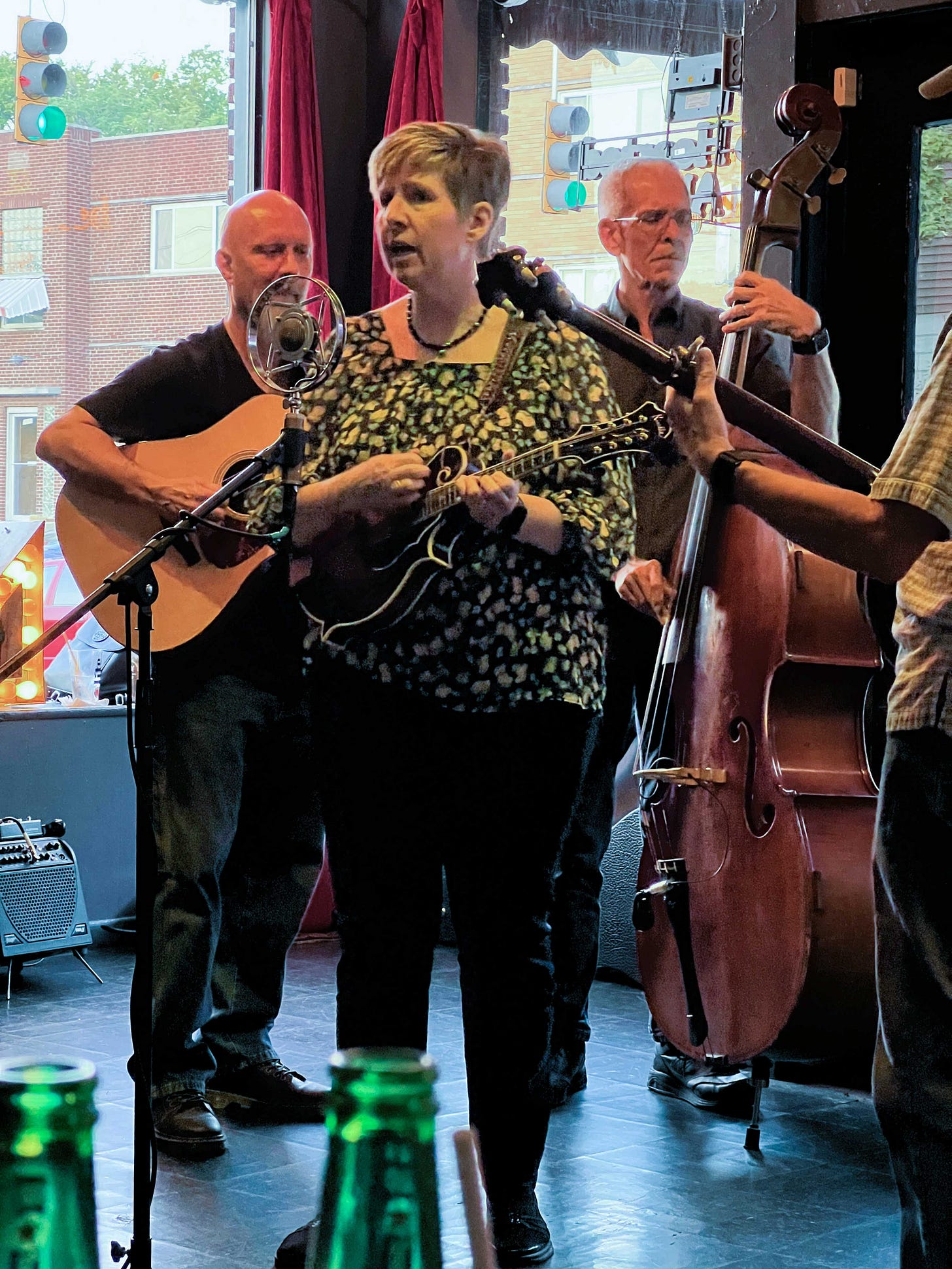Grandad West was the most musical person in our family. He played classical piano and organ well enough to perform in church. He was adept at many brass instruments, including the baritone, and played in the town band. He sang beautifully.
He also played the banjo, which was odd considering his taste in music.
After grandad died, my mom offered his banjo to me. As I held the instrument, I quizzed her about it.
“Where did he learn to play banjo?” I asked.
“He didn’t,” mom said. “He just played. He said that all it took to play banjo was confidence.”
Rudy Everts, a musician friend of mine, added to this mystery. One time, Rudy insisted we get out his drum kit so he could teach me to play.
“I have no rhythm,” I said. “I can’t even dance.”
“Doesn’t matter,” he said. Percussion can be a trick. “Yes, you have to practice. But a lot of it is confidence.”
These two brief conversations have stuck with me for years. Probably because I’m not exactly brimming with confidence. If you met me at a party, you’d be mistaken. Because I don’t go to parties.
But when it comes to furniture design – and design in general – I think that confidence is 49 percent of my process. When I have a good idea (or bad one), I seize it in my brain until it becomes almost real. I can see the thing from all angles. There isn’t much murk. Perhaps I’ll leave a couple details to resolve during the construction process, but generally I know what I want.
Then I start building, and I keep going until the object matches the thing in my brain.
Those are my best designs.
My worst designs occur where I don’t start out with a shining mental picture. Perhaps I have a sketch from a client. Or I’m not sure where to begin on a particular form, so I attempt a cheap copy of someone else’s good idea and modify it on the fly.
In these cases, the construction process feels like treading water in warm urine. I’m unhappy, in distress and I don’t know how to escape.
The other 51 percent of my design process is absolutely stuff that I’ve learned. I spend a little time each day looking at pieces of furniture – both old and new. And not just stuff I like. I like to look at stuff I dislike. When I like or dislike an object, I try to figure out why. That is the lesson. But basically, I’m trying to see everything I can and chip away at the things I haven’t seen.
I also spend some time with the technical side of the craft each day. This week I’m reading papers on the hysteresis loop in wood, which eliminates about 90 percent of the internet’s dumb questions about wood movement. Also, if wood movement exists, how does plywood and cross-banding also exist? Or I might look at anything involving the dark art of finishing. Basically, I’m trying to chip away at my ignorance a little bit every day.
These little rituals – looking at and figuring out shit – swirl about until a picture emerges in my head.
Then I’m off.
So if design is 49 percent confidence and 51 percent observation, then where does skill come in? Skill plays a role, but I think it’s a villain. Many woodworkers are held back by their skills. They know what they can do at the bench, so they design around that set of skills. In contrast, many beginning woodworkers don’t know that mitered dovetails or chairmaking are “hard,” so they just do them to make the object they want to have. And they succeed.
Here are the other things that don’t help my designs.
Keep reading with a 7-day free trial
Subscribe to The American Peasant to keep reading this post and get 7 days of free access to the full post archives.


